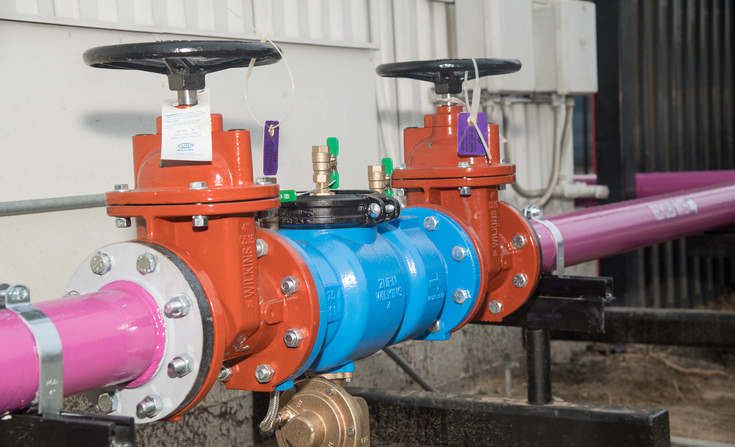First Mission Critical Site in the United States to Use Reclaimed Water
Published on by Water Network Research, Official research team of The Water Network in Technology
A United Technologies manufacturing facility in Santa Fe Springs, California, officially opened the valve on a new water reclamation project — one that will siphon off its draw on the freshwater resources there by 25 million gallons annually.
By Heather Clancy

The UTC site's Operations Director Diego Torres estimates that the investment in a reclaimed water system will be returned within one year.
That’s a whopping reduction of 95 percent annually, enough to supply 228 households with potable water for consumption and other uses. The reclaimed water will be recycled through the 50-something-year-old plant’s cooling towers, which expel heat generated by a 64,000-square-foot production line that spits out the carbon friction materials used in civil and military brakes.
"By moving to reclaimed water, we will now be using the same system that many local municipalities use for public irrigation and landscaping," said Diego Torres, director of the operation, which is operated by UTC Aerospace.
The project first was proposed almost four years ago, after Torres had the chance to check out a similar system at a site operated by fellow manufacturer Air Products and Chemicals. It took nearly three years to plan, design and construct.
"There were a lot of approvals we had to go through," he acknowledged.
The new system required the installation of new pipes (about 1,000 feet) by the Central Basin Municipal Water
District to connect the site into the reclaimed water network. Central Basin offers a recycled water program that includes more than 80 miles of "purple pipes," two distribution systems and four pump systems.
While UTC Aerospace didn’t have to replace the existing cooling equipment physically, it did have to modify the chemicals used to control the biology of the water circulating through them. It also had to install specifically designated pipes to keep the system separate from the drinking water supply, Torres said. The water is cycled through the towers five times before it is flushed and returned back to the district for treatment.
According to the water district’s website, it supports about 300 industrial, landscape and irrigation systems through southeast Los Angeles county. Schools, landscaping companies, golf courses and other businesses are using the reclaimed water.
Read full article: Green Biz
Media
Taxonomy
- Water Reuse & Recycling
- Industrial Water Reuse
- Pipes Design
- Integrated Water Management
- Reuse
- Water Management
- Infrastructure
- Urban Water Infrastructure
- Infrastructure Management
- Smart Infrastructure Development
- Pipes and Pipelines